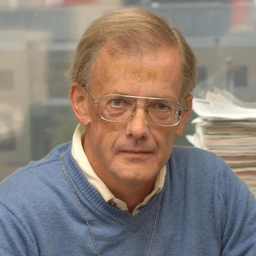
April 1, 2021
1:00-2:00 p.m.
ABSTRACT:
Atom arrays in solid-state systems, such as dopants in Si, atoms on surfaces or dangling bond arrays provide exciting new opportunities to perform quantum simulations. Solid-state systems provide the opportunity to do simulations atom-by-atom with atomically precise placement, complex geometries and unit cells, local gates, applied fields, engineered disorder and strong hopping that allow the low T limit to be reached. I will discuss some of these opportunities and challenges, focusing especially on what can be learned about many-body systems in the small systems that are now being fabricated and studied. I will show that interesting many-body physics and quantum experiments can be revealed in arrays with as few as ten sites. Theoretical simulations will be discussed to highlight the transition to the “many-body” limit. Such theoretical simulations are quickly overwhelmed by system size, establishing the critical role that experimental simulators must play in developing platforms for quantum labs on a chip.
BIOGRAPHY:
Garnett W. Bryant is group leader of the Atom Scale Device Group at the National Institute of Standards and Technology (NIST), a fellow of the Joint Quantum Institute (JQI) of the University of Maryland and NIST and a fellow of the American Physical Society. Prior to that, he was at the McDonnell Douglas Research Laboratory from 1982 until 1990, and at the Army Research Laboratory from 1991 until 1994. He received his Ph.D. from Indiana University in 1978, had a postdoctoral position at Washington State University and a (US) National Research Council fellowship at NIST (then the National Bureau of Standards). His research has focused primarily on the theory of the electronic and optical properties of various condensed matter system. Initially efforts were on bulk systems, systems with defects, and surfaces. For many years, he has been studying nanoscale systems, such as semiconductor quantum dots, wires and nanocrystals, and metallic nanoparticle plasmonics. In parallel, he has conducted for the last twenty years a theory program in near-field optics, near-field optical microscopy and nanooptics. Current interests include condensed matter systems for quantum information technology, such as the optics of quantum dots and quantum dot molecules, spin physics in these structures, atom-based silicon electronics, quantum plasmonics and highly correlated, confined, low-dimensional systems. He has nearly 200 publications, numerous invited talks at international conferences and workshops, has coauthored a book on the optics of quantum confined systems and a book on plasmonics and served on the program committees and organized symposia for such meetings as CLEO-QELS, the March American Physical Society Meeting and the International Conference on Near-Field Optics.